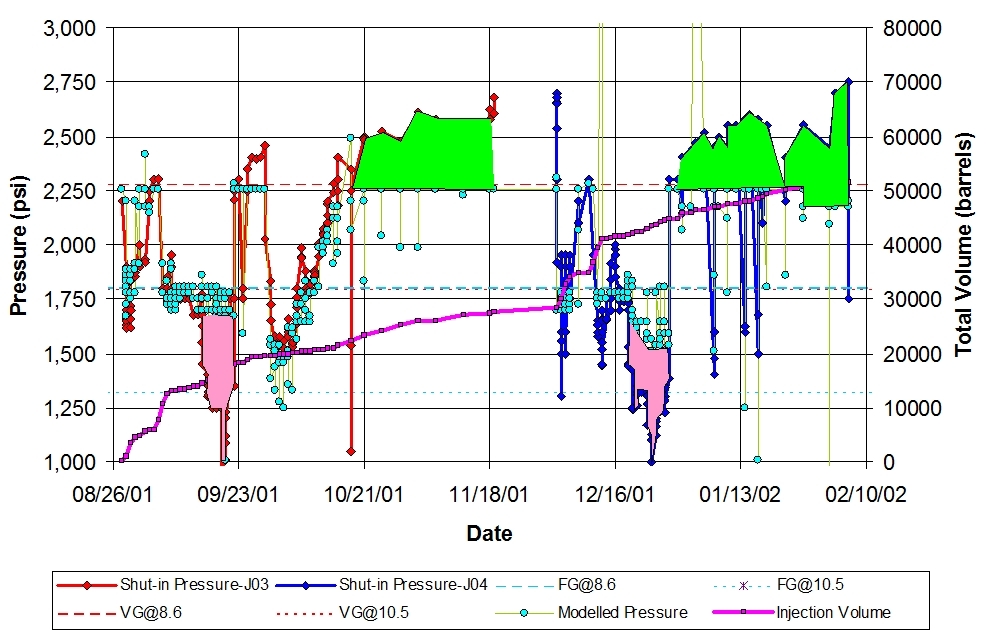

Solids and Cuttings Reinjection (CRI), the process of disposing of waste drilling mud or produced solids back into subsurface formations via hydraulic fracturing, is a well-known and environmentally safe processes.
The critical difference between CRI operations and hydraulic fracturing for well stimulation is the repeated, long-term, and often large-volume disposal of (mostly) aqueous solutions containing a small percentage of solids.
OFG has been involved in Solids Injection operations for decades, and Dr. Neal Nagel was co-editor of the SPE Monograph on Solids Injection.
The start of any CRI or solids injection operation begins with the selection of the appropriate target formation – one in which the injected solids will remain entrained. By necessity, this means a geomechanical model, preferably a 3D model, needs to be developed in order to both evaluate containment of the solids in the target formation as well as evaluate long-term operational constraints (injection pressures and target formation maximum solids capacity).
Once the target formation has been selected and volume limits for the injection zone and the injection pressure versus volume relationship established, monitoring operations are planned. Monitoring may include continuous pressure evaluations as well as downhole monitoring such as microseismics or tiltmeters.
OFG can not only develop the original geomechanics model to support the solids injection design, but we can support long-term monitoring efforts as well.

